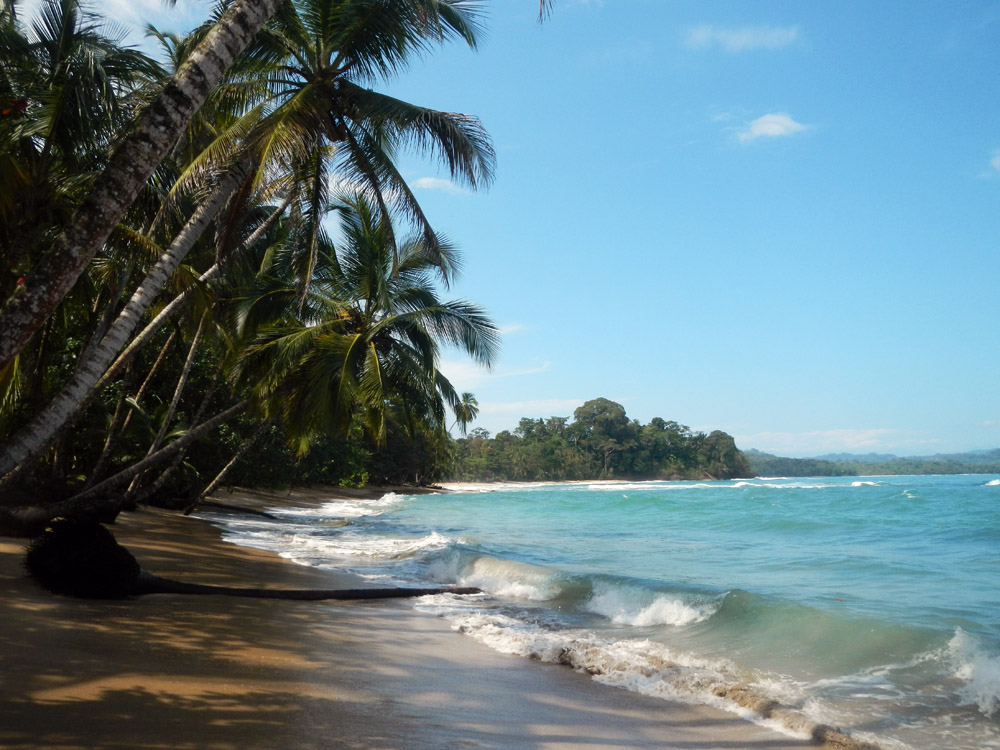
After crossing the decommissioned railroad bridge (the border) you will arrive in Sixaola. From here you can either take a bus to Changuinola (US$1.25), and change to a bus to the border (US$1), or take a shared taxi direct to the border town of Guabito for $7-10 per person (45minutes). A Sixaola bus will get you to the crossroads 11km outside of town (Hone Creek) from where you can take a taxi, but only take this bus if there is no bus to either Puerto Viejo or Manzanilla.ĭriving here is also popular, but roads can be bad as at certain times of the year, the pot holes can get obnoxious.įrom Bocas del Toro take a boat to Almirante. The last bus leaving Limón that will get you directly to Puerto Viejo leaves Limón at 5:30pm.
#Puerto viejo beach costa rica driver#
Here you can take a bus to Puerto Viejo or Manzanillo - the Manzanillo bus passes through Puerto Viejo and may be more useful if your accommodation is a little bit south of town - you can ask the driver to stop outside your hotel, saving you on the cost of a taxi. Once in Limón you must walk a couple of blocks to the other side of the baseball stadium to the MEPE terminal. The Caribeños line have hourly direct buses to Limón from their terminal on Calle Central in San Jose. If the next direct bus from San Jose to Puerto Viejo is sold out, or if you are travelling from Turrialba or another part of Costa Rica, you can take a bus to Limón and transfer there to a Puerto Viejo bus.

Make sure you get on the bus to Puerto Viejo de Talamanca, not de Sarapiquí which is a different part of the country. The ride is approximately 4½ hours, although the voyage can take much longer - especially if you leave during rush hour on a Friday, for example. The first bus leaves at 6am and the last bus leaves at 4pm and all buses are direct with one pit stop outside of Limón. Please note: Many people in San José will tell you the bus leaves from Terminal Caribeños, but this is incorrect, this has been changed in 2012. The name of the bus company is Transportes Mepe. Get in By bus from San Jose įrom San José a bus leaves 4-5 times a day from Terminal Atlántico Norte (in Barrio México, near another bus terminal called "7-10"). Today, Puerto Viejo is as modern as any beach town, though it still retains its original charm. Private phone lines became available in 1996, and high-speed internet was offered in 2006. In 1986, electricity arrived, supplying light and other important conveniences to the town. In 1979, a new road connected the small village to San Jose and the Central Valley. Until the late 1970’s, Puerto Viejo was relatively isolated from the rest of Costa Rica. Because of their influence, many Puerto Viejo natives today speak English as their first language. Later, Afro-Caribbean immigrants arrived, many from Jamaica, and settled in the coastal towns of Puerto Viejo, Punta Uva, Manzanillo and Monkey Point. Rastafari culture has a firm foothold in the town, and many Rastas sell handmade jewelry and other wares along the town’s vibrant roadside.īefore the Spanish arrival, the Bribri, Kekoldi and Cabecar indigenous peoples were the primary inhabitants of Costa Rica’s southern Caribbean. With its blend of Afro-Caribbean descendants, expat Europeans and indigenous Costa Ricans, Puerto Viejo charms visitors with a unique mix of people and cultures. True to its beach location and Caribbean ambiance, bikes and pedestrians dominate road traffic along the coastal roads.

The center of town now has many souvenir and surf shops, bars, restaurants, hotels and tour companies.

Avid surfers, drawn to the famous Salsa Brava waves, have made Puerto Viejo a hotspot on the surfing circuit. The relaxed, seaside town is framed by jungle, turquoise seas, banana plantations and scenic rivers.įormerly a small fishing village, Puerto Viejo has grown rapidly in recent years. Located on the Caribbean Coast, about an hour south of Limon, Puerto Viejo is the center of activity between the smaller villages of Cahuita and Manzanillo. There are two gorgeous National Parks nearby - Cahuita and Manzanillo, and it rains more than on the Pacific side, which is why it is so lush and green with the rainforest coming down to the sea.Ĭlear water, coconut palms, great surf and a laid-back Caribbean atmosphere make Puerto Viejo a favorite among travelers. This is an area where foreigners are buying and building. It is popular with surfers and backpackers. Puerto Viejo de Talamanca is a small coastal town in Caribbean Costa Rica in the province of Limón. For other places with the same name, see Puerto Viejo (disambiguation).


 0 kommentar(er)
0 kommentar(er)
